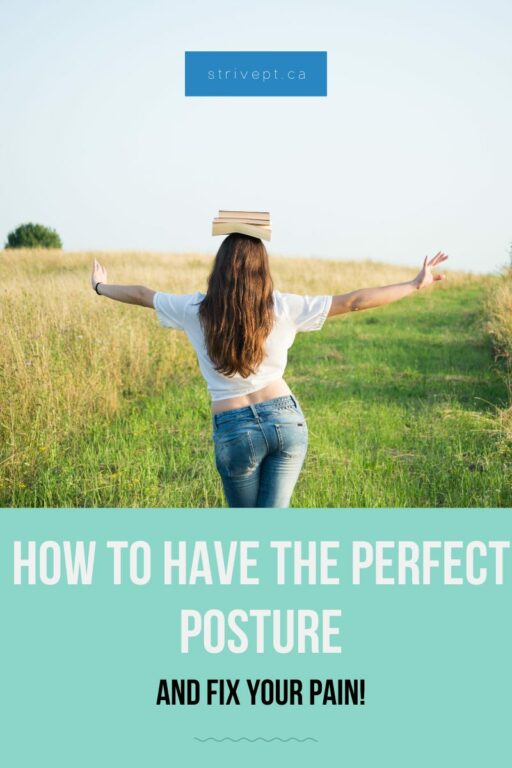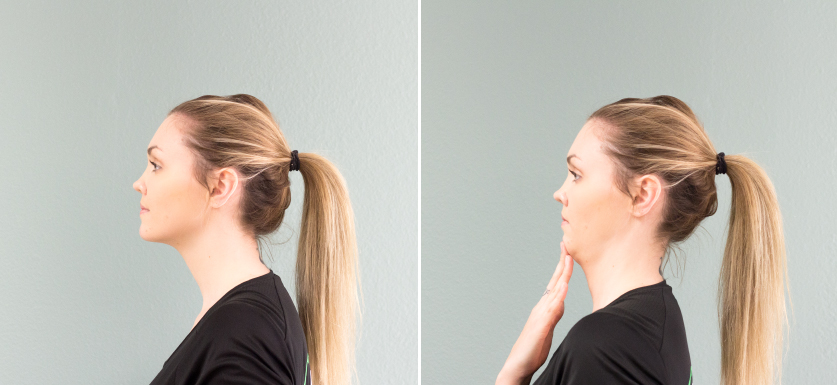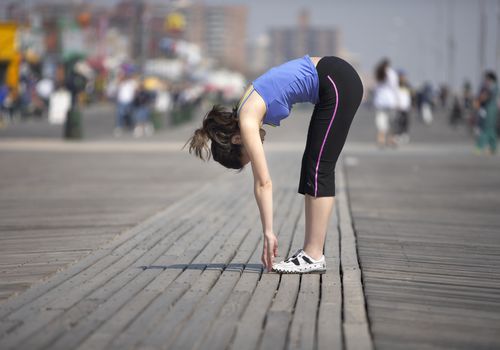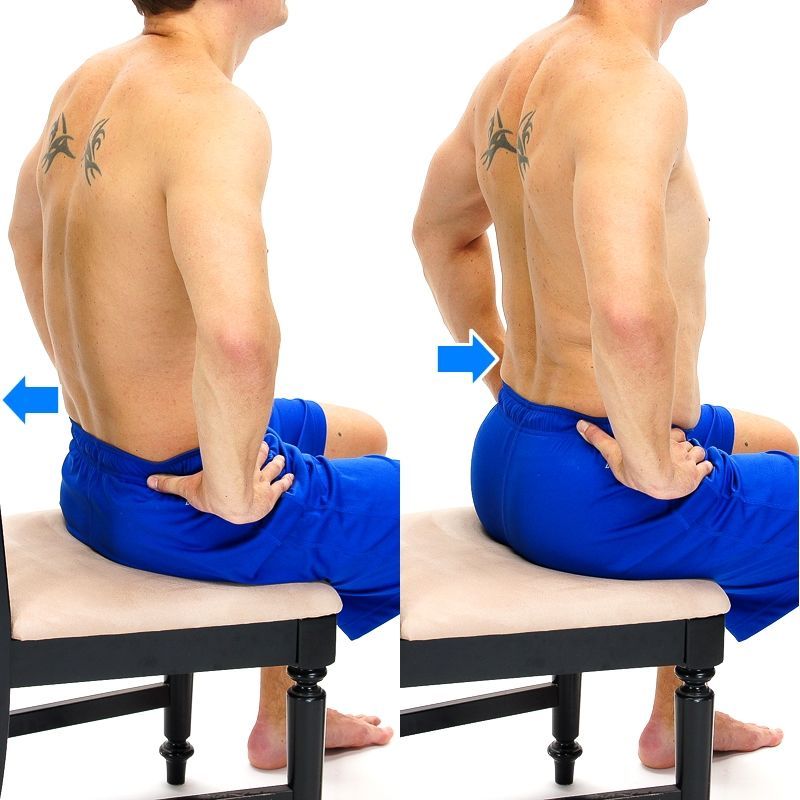
Have you ever experienced pain in your back, shoulders, or neck from sitting all day at work? Do you feel like this pain is a result of ‘poor posture’ or sitting in a slouched position?
Do you try to sit perfectly straight, only to find yourself returning to that slouched posture within the hour?
If so, this blog is exactly what you need in order to fix your posture and your pain!
What is Perfect Posture?
Let me start off by saying there is actually no perfect posture. Posture is highly variable and the majority of research shows that posture does not necessarily cause pain.
I repeat, your posture is likely not the main reason you are experiencing pain.
A research study from 2016 compared low back postures in people with and without long-standing low back pain. The results of this study found no significant difference in low back posture between those with low back pain and those without low back pain. Furthermore, low back postures were highly variable within the two groups (i.e. people with pain all sit very differently from each other, and so do people without pain).
This means that we cannot say people with low back pain have different posture than those without, and we can say that low back posture is highly variable and will look different in each person regardless of their pain.
Furthermore, despite common belief, there are actually no bad postures. While slouching has commonly been viewed as bad for you, this has not been proven, other than the fact it may not look aesthetically pleasing.
Another study from 2016 assessed low back posture in a group of 50 people without any pain. The participants’ postures were measured in 3 positions while doing a 10 minute computer task: sitting normally, sitting with ‘correct’ posture, and standing.
Although it is commonly assumed that sitting with an arch in our low back is the ‘correct’ posture, this study found that most people did not choose to sit this way when asked to do a 10 minute computer task. When asked to sit with ‘correct’ posture, most participants did sit with more of an arch in their low back, which was similar to their low back posture in standing. This study tells us that many individuals without pain choose to sit in a slouched position, which does not seem to cause them problems. As such, we cannot say that sitting slouched will cause pain.
Can Bad Posture Cause Pain?
At this point, you’re probably wondering what is causing your pain if it is not due to your posture, and there aren’t any other activities that are causing it. Well, although posture is highly variable and has not been shown to cause pain, prolonged postures may play a role.
As humans, our bodies love movement. We were not designed to be in one position all day, but rather to be constantly moving and being active. Thus, your pain may be related to being in one posture for a prolonged period of time, rather than the posture itself. For example, if you are someone who works a desk job where you are sitting for the majority of the day, sitting with perfect posture or standing all day likely wouldn’t feel significantly better.
What may be helpful is instead spending more time moving throughout your day. A good rule of thumb is to take a break at least once every hour to move around and get your body into some different positions. There are no bad postures, other than the posture you’re in for too long!
Does Exercising Improve Posture?
While generally increasing the amount you are moving throughout the day can have a large impact on pain, there are also certain exercises that can be helpful in getting you to move into positions that you normally don’t achieve.
Let’s start off by looking at the typical posture that we tend to adopt after long periods of sitting/desk work. In the image below we can see that the person’s head, neck, shoulders, upper back, and low back all start to flex forward. Thus, the specific exercises that will be helpful for individuals who sit all day will be those that take us out of this forward position.
One great exercise to help us get out of the posture in the image above is the neck retraction pictured below. During this exercise you are trying to move your head straight back. Think of how when you get an eye exam, that puff of air shoots into your eye, and your natural reaction is to pull your head straight back.

This exercise helps bring our head and neck into a position they don’t normally achieve, thus increasing movement in that area and helping you feel better!
Another good exercise to help us get out of the forward and slouched posture is the shoulder external rotation and retraction.

For this exercise we want to pull our shoulder blades back and try to pinch them together while simultaneously rotating our arms out to the side. If we look back at the image of a slouched person at a desk, we can see their shoulders are slouched forward and rotated inwards. The shoulder external rotation and retraction will help our shoulders get out of this slouched position and into a position they don’t normally reach.
One more great exercise for individuals who sit all day is the pelvic tilt pictured below.
For this exercise we want to arch our low back as much as possible and then relax. Once again, this exercise helps us get out of that slumped posture and puts our low back and pelvis in a different position than what they are used to with sitting.
Next, let’s take a look at the typical posture we adapt after standing for prolonged periods of time pictured below.

If we look at the person on the left, we can see that her upper back, shoulders, neck, and head, are all positioned similarly to those in the person sitting slouched. As such, the previously mentioned exercises should all be helpful for individuals who stand all day as well. One of the main differences between standing slouched and sitting slouched is our low back posture. For the person standing slouched on the left side of the image above, we can see her low back actually has an increased arch, rather than the flexed position seen in slouched sitting.
In order to reverse this movement pattern, we can do the standing flexion exercise in the image below.

For this exercise, we want to slowly curl forward while attempting to bend every part of our spine and aiming to touch our toes. After you reach the bottom, slowly straighten back up by trying to move one part of your spine at a time.
While there are no bad postures, other than the one that you’re in for too long, there may be certain postures you should avoid if you are experiencing pain. As such, it is important to always see a healthcare professional to get assessed and determine the proper course of treatment.
Still not sure what to expect with your pain and posture? Call us at 519-895-2020, or use our online booking tool on www.strivept.ca to book an appointment with one of our knowledgeable physiotherapists, and they will be sure to help you understand your injury.
Cheers,
Liam Newlands
Physiotherapist at Strive Physiotherapy and Performance
References:
https://bmcmusculoskeletdisord.biomedcentral.com/articles/10.1186/s12891-016-1250-1
https://www.sciencedirect.com/science/article/abs/pii/S0003687015300788

